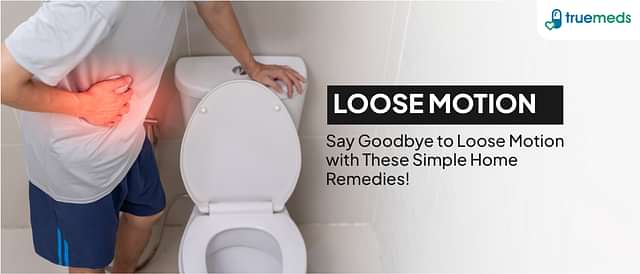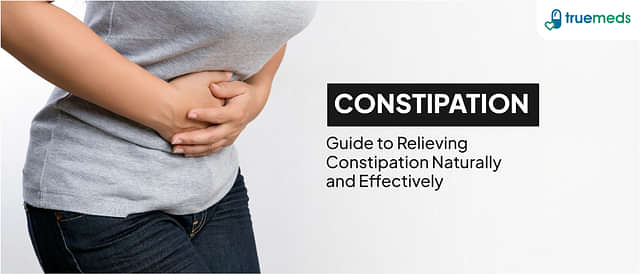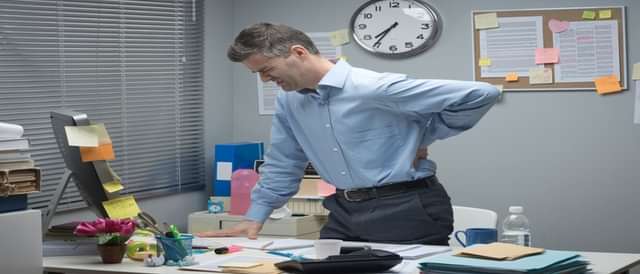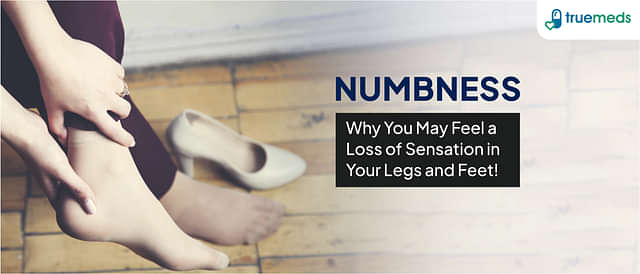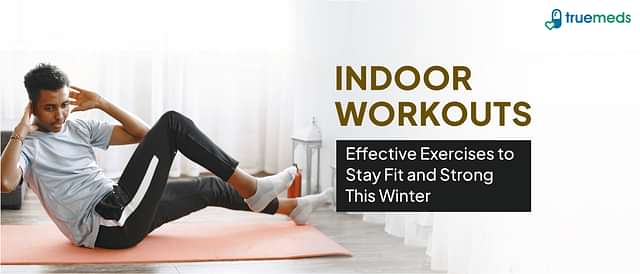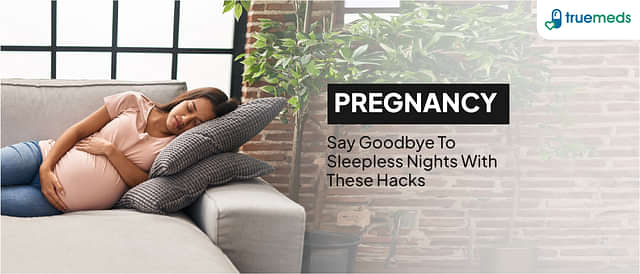Calf Muscle Pain: What Causes It and How to Find Relief
Last updated on : 01 Dec, 2025
Read time : 13 min
Calf muscle pain is a common complaint that can range from mild discomfort to intense aching, often affecting mobility and quality of life. The pain typically occurs in the back of the lower leg, between the knee and ankle, and may arise from physical overuse, minor injuries, or more serious underlying health conditions [1]. Whether it’s a result of physical activity, circulatory issues, or nerve disorders, identifying the cause of calf pain is essential to determine the most effective treatment and prevent recurrence.
Common Causes of Calf Muscle Pain
If you experience pain after engaging in physical activities like walking or running, it’s typically related to muscle strain. However, if the pain appears suddenly without any obvious cause, it may indicate an issue with your blood vessels. Below are the most common causes of calf muscle pain explained.
1. Muscle Cramps
Muscle cramps occur as sudden, involuntary contractions of the calf muscle. Dehydration, electrolyte imbalances, or overuse during physical activity can trigger these. The pain is usually intense but short-lived and can be relieved with stretching and hydration.
2. Muscle Strain
A strain occurs when the calf muscles are overstretched or torn (sometimes referred to as a “pulled” muscle) due to excessive physical activity, improper warm-ups, or sudden movements [2]. Symptoms include sharp pain, swelling, and difficulty walking.
3. Arterial Claudication
This condition results from reduced blood flow to the calf muscles due to narrowed arteries, often associated with Peripheral Artery Disease (PAD). It causes pain or cramping during physical activity, which subsides with rest [3].
4. Neurogenic Claudication
Pain from nerve compression in the spine, often linked to conditions like spinal stenosis, can radiate to the calf, causing numbness, tingling, or burning sensations.
5. Achilles Tendinitis
Inflammation of the Achilles tendon, which connects the calf muscles to the heel bone, can cause pain, stiffness, and swelling in the lower leg, particularly after physical exertion.
6. Compartment Syndrome
A medical emergency, compartment syndrome occurs when excessive pressure builds within the calf, restricting blood flow and causing severe pain, swelling, and possible tissue damage. Prompt diagnosis and intervention are critical for a positive outcome.
7. Diabetic Neuropathy
Prolonged high blood sugar levels can damage nerves, leading to a burning or aching sensation in the calves, often accompanied by numbness or tingling.
8. Varicose Veins
These are enlarged, twisted veins that can cause aching, heaviness, and visible swelling in the calf region, particularly after prolonged standing.
9. Deep Vein Thrombosis (DVT)
A blood clot in the calf’s deep veins can lead to swelling, redness, warmth, and severe pain. DVT requires immediate medical attention to prevent complications like pulmonary embolism, a potentially fatal condition [4].
Symptoms of Calf Muscle Pain
The symptoms of calf muscle pain vary depending on the underlying cause. Mostly, it is marked by pain, swelling, and warmth in the leg. The most common signs include:
- Muscle Stiffness: Difficulty in moving the calf or walking.
- Swelling: Visible puffiness or enlargement of the calf area.
- Sharp or Dull Pain: The intensity can range from mild discomfort to severe throbbing.
- Redness or Warmth: Inflammation or restricted blood flow can cause skin changes.
- Numbness or Tingling: Often associated with nerve-related conditions.
Diagnostic Tools for Calf Muscle Pain Assessment
Diagnosing the underlying cause of calf muscle pain requires a detailed medical evaluation and specific diagnostic tests. These methods help pinpoint the exact source of discomfort and guide appropriate treatment plans:
- Physical Examination: A healthcare provider assesses the affected area for swelling, tenderness, and range of motion. This step also helps identify visible abnormalities, such as bruising or deformities.
- Ultrasound: This imaging technique detects blood clots or vascular issues, including deep vein thrombosis (DVT) or varicose veins. It is a common first-line imaging test for DVT [4].
- MRI Scan: Magnetic resonance imaging provides detailed insights into soft tissues, tendons, ligaments, and nerves. It is particularly useful for diagnosing severe injuries or structural issues [5].
- Blood Tests: These identify underlying systemic conditions, such as diabetes, infections, or clotting disorders, that could contribute to calf pain.
- Electromyography (EMG): This test evaluates muscle and nerve function, helping diagnose neuropathies or nerve-related calf pain.
Treatment for Calf Muscle Pain
Calf muscle pain treatment depends on the cause and severity of the condition. Below are commonly used calf muscle pain treatments:
- Rest and Ice Therapy: Resting the affected leg and applying ice packs for 15–20 minutes at a time can help reduce swelling and pain. This approach, often following the R.I.C.E. principle (Rest, Ice, Compression, Elevation), is especially effective for minor injuries or muscle strains.
- Pain Relievers: Over-the-counter medications, like ibuprofen or acetaminophen, can reduce inflammation and alleviate discomfort. Always consult a doctor or pharmacist before starting a new medication.
- Physical Therapy: A structured physical therapy program can enhance recovery by focusing on strengthening and stretching exercises tailored to improve mobility and prevent future injuries [6].
- Compression Stockings: Designed to improve blood flow, compression stockings are especially beneficial for conditions like DVT or varicose veins, where circulation is compromised.
- Surgery: In severe cases, such as compartment syndrome, ruptured tendons, or arterial blockages, surgery may be necessary to restore function and relieve pain.
Home Remedies for Mild Calf Muscle Pain Relief
For mild-to-moderate calf muscle pain, natural remedies can often provide significant relief. These remedies are typically appropriate for pain caused by muscle strain or fatigue. Here are some of the most effective methods to try:
1. Stretching Exercises
Stretching is an essential remedy to alleviate tightness in the calf muscles. Simple, gentle stretches, like standing calf stretches or downward dog poses, can help loosen the muscles, improve flexibility, and reduce tension. How to Do It: Stand with your hands against a wall and extend one leg backward while keeping the other bent. Press your heel into the ground and feel the stretch in your calf. Hold for 20–30 seconds, then switch sides. Stretching regularly can prevent recurring pain and improve muscle function [7].
2. Warm Compress
Applying a warm compress to the calf area enhances blood circulation, which helps deliver oxygen and nutrients to the affected muscles while reducing stiffness and soreness. How to Use It: Use a warm towel, heating pad, or hot water bottle. Apply it to the sore area for 15–20 minutes several times a day. This method works well for pain due to overuse or muscle fatigue.
3. Hydration and Electrolyte Balance
Dehydration and electrolyte imbalances are common causes of muscle cramps, including those in the calves. Maintaining proper hydration ensures that your muscles function optimally. How to Stay Hydrated: Drink at least 8–10 glasses of water daily, and consider consuming drinks with electrolytes if you’re exercising or sweating heavily. Incorporate foods rich in potassium and magnesium, like bananas, oranges, and spinach, to support muscle health.
4. Epsom Salt Bath
Epsom salt, rich in magnesium sulfate, is a popular remedy for soothing sore muscles and reducing inflammation. While the scientific evidence for magnesium absorption through the skin is limited, many people find that the combination of warm water and the mineral promotes muscle relaxation [8]. How to Use It: Add 2 cups of Epsom salt to a warm bath and soak your legs for 15–20 minutes. Repeat this remedy a few times a week as needed. This method also promotes relaxation and eases stress-related muscle tightness.
5. Massage Therapy
Massaging the affected calf can stimulate blood flow, release muscle tension, and alleviate pain. Massage also promotes lymphatic drainage, reducing swelling in the muscles [9]. How to Do It: Use your hands or a massage roller to apply gentle pressure to the sore areas. Start from the base of the calf and work upwards toward the knee. For added benefits, use a plain lotion or essential oils like lavender or peppermint, which have soothing properties.
Preventing Calf Muscle Pain
Preventing calf pain is often easier than managing it. A proactive approach can help strengthen the muscles, reduce strain, and avoid injuries. Here are some practical prevention tips:
1. Regular Exercise and Conditioning
Building strong and flexible calf muscles reduces the likelihood of injuries and strain. Include a combination of strength training and stretching exercises in your routine. Heel raises, lunges, and yoga poses like Warrior II are excellent for strengthening the calves.
2. Stay Hydrated
Proper hydration is critical to muscle health, particularly during physical activity. Dehydration can lead to cramps and stiffness in the calf muscles. Drink water consistently throughout the day, and include hydrating foods like watermelon and cucumbers in your diet.
3. Wear Proper Footwear
Supportive shoes with proper arch support minimize strain on the calf muscles and prevent issues like shin splints or Achilles tendonitis. Choose shoes designed for your activity, such as running shoes for jogging or cushioned insoles for prolonged standing.
4. Warm-Up and Cool Down
Skipping a proper warm-up before exercising can strain the calf muscles. Similarly, cooling down after a workout prevents stiffness and soreness. Perform light cardio or dynamic stretches, such as leg swings, for 5–10 minutes before exercise. End your workout with slow, static stretches to relax the muscles and improve recovery.
5. Healthy Diet for Muscle Support
A diet rich in essential nutrients supports overall muscle health and prevents deficiencies that cause cramps. Magnesium and potassium are vital for muscle function. Include foods like almonds, avocados, sweet potatoes, and beans in your meals. Maintaining a balanced diet also supports energy levels and reduces muscle fatigue.
When to See a Doctor
It is important to seek prompt medical attention to rule out serious conditions like DVT or compartment syndrome. You should consult a doctor if:
- Pain persists or worsens despite trying home remedies.
- Sudden or intense swelling, redness, or warmth in the calf area suggests a possible blood clot or infection [4].
- Severe or sudden pain occurs, especially after an injury.
- Calf pain is accompanied by fever, difficulty walking, or other systemic symptoms.
- You experience leg pain that consistently gets worse with walking and improves with rest (a sign of claudication) [3].
Conclusion
Calf muscle pain is a widespread issue that may arise from minor strains, overuse, or more serious medical conditions. While most cases can be managed with rest, hydration, and stretching, it is important not to ignore persistent or severe pain, especially when accompanied by other symptoms such as swelling or numbness. A proper diagnosis by a healthcare professional is essential for identifying the root cause and guiding effective treatment. With appropriate care and preventive measures, most individuals can recover fully and avoid future complications.
Frequently Asked Questions (FAQs)
What is the reason for calf muscle pain?
Muscle strain or cramps due to overuse, dehydration, or improper warm-up are the most common causes. More serious causes include DVT and arterial claudication [3].
When should I be worried about calf pain?
Seek immediate medical attention if the pain is severe, persistent, or accompanied by sudden swelling, redness, difficulty breathing, or difficulty walking.
What diseases cause calf pain?
Conditions like deep vein thrombosis (DVT), varicose veins, diabetic neuropathy, and compartment syndrome can lead to calf pain.
What deficiency causes calf pain?
Deficiencies in magnesium or potassium are common causes of muscle cramps and calf pain. These deficiencies often affect the calf muscles due to their heavy involvement in movement.
Can calf pain be caused by diabetes?
Yes, diabetic neuropathy can lead to calf pain, tingling, or burning sensations.
Does calf pain indicate heart problems?
In some cases, arterial claudication caused by reduced blood flow (often related to Peripheral Artery Disease) may signal underlying cardiovascular issues [3].
How do I treat calf pain?
Rest, gentle stretching, hydration, warm compresses, and Epsom salt baths are effective for mild to moderate pain. Persistent symptoms or signs of a clot require medical evaluation.
References
[1] Kristensen, N. S., Hertel, E., Skadhauge, C. H., Kronborg, S. H., Petersen, K. K., & McPhee, M. E. (2021). Psychophysical predictors of experimental muscle pain intensity following fatiguing calf exercise. PLoS ONE, 16(7), e0253945. https://doi.org/10.1371/journal.pone.0253945
[2] Green, B., McClelland, J. A., Semciw, A. I., Schache, A. G., McCall, A., & Pizzari, T. (2022). The Assessment, management and Prevention of calf muscle strain Injuries: A qualitative study of the practices and1 perspectives of 20 expert sports clinicians. Sports Medicine – Open, 8(1). https://doi.org/10.1186/s40798-021-00364-0
[3] Hirsch, A. T., Haskal, Z. J., Hertzer, N. R., Bakal, R. A., Creager, M. A., Halperin, L. E., Hiratzka, L. F., Murphy, W., Olin, J. W., Puschett, J. B., Smith, S. C., Jr., Stella, J., Taylor, L. M., Jr., & Szilagyi, P. G. (2006). ACC/AHA 2005 Practice Guidelines for the Management of Patients with Peripheral Arterial Disease (Lower Extremity, Renal, Mesenteric, and Abdominal Aortic): A collaborative report from the American Association for Vascular Surgery/Society for Vascular 2Surgery, Society for Cardiovascular Angiography and Interventions, Society of Interventional Radiology, Society for Vascular Medicine and Biology, and the American College of Cardiology/American Heart3 Association Task Force on Practice Guidelines (Writing Committee to Develop Guidelines for the Management of Patients With Peripheral Arterial Disease): Endorsed by the American Association of Cardiovascular and Pulmonary Rehabilitation; National Heart, Lung, and Blood Institute; Society for Vascular Nursing; TransAtlantic In4ter-Society Consensus; and Vascular Disease Foundation. Circulation, 113(11), e463–e654. https://doi.org/10.1161/CIRCULATIONAHA.106.174526
[4] Konstantinides, S. V., Meyer, G., Becattini, C., Bueno, H., Geersing, G.-J., Harjola, A.-P., Hentrich, E., Katsouda, C., Kotecha, V., Lankeit, M., Leenarts, M., Moerkerken, A., Salje, A., Schulman, S., Söhne, M., Talac, J., Vlachopoulos, C., & Vlachou, M. (2019). 2019 ESC Guidelines for the diagnosis and management of acute pulmonary embolism developed in collaboration with the European Respiratory Society (ERS). European Heart Journal, 41(4), 543–603. https://doi.org/10.1093/eurheartj/ehz405
[5] Trybulski, R., Gałęziok, K., Matuszczyk, F., Halski, T., & Muracki, J. (2025). Problems in Diagnosis and Treatment of Soleus Muscle Injuries—Narrative Review and Case Report. Journal of Clinical Medicine, 14(6), 1955. https://doi.org/10.3390/jcm14061955
[6] Söderlund, K., & Blegen, M. (2020). Muscle oxygenation and the regulation of exercise performance: a review. Sports Medicine, 50(5), 903–916. https://doi.org/10.1007/s40279-020-01258-3
[7] Radford, J. A., Landorf, K. B., Buchbinder, R., & Cook, C. (2007). Effectiveness of calf muscle stretching for the short-term treatment of plantar heel pain: a randomised trial. BMC Musculoskeletal Disorders, 8(1), 36. https://doi.org/10.1186/1471-2474-8-36
[8] Deshmukh, J., & Ray, S. (2019). Effectiveness of application of hot water with Epsom salt v/s plain hot water on knee joint pain among geriatric women. The Pharma Innovation Journal, 8(6), 434-441. https://www.academia.edu/download/76532417/8-5-169-652.pdf
[9] Saban, B., Deutscher, D., & Ziv, T. (2014). Deep massage to posterior calf muscles in combination with neural mobilization exercises as a treatment for heel pain: a pilot randomized clinical trial. Manual Therapy, 19(2), 102-108. https://www.sciencedirect.com/science/article/pii/S1356689X13001471
Disclaimer
Our healthcare experts have carefully reviewed and compiled the information presented here to ensure accuracy and trustworthiness. It is important to note that this information serves as a general overview of the topic and is for informational purposes only. It is not intended to diagnose, prevent, or cure any health problem. This page does not establish a doctor-patient relationship, nor does it replace the advice or consultation of a registered medical practitioner. We recommend seeking guidance from your registered medical practitioner for any questions or concerns regarding your medical condition.
Popular Articles
Recommended Articles
Recent Articles
Company
About UsHealth ArticleHealth StoriesHealth LibraryDiseases & Health ConditionsAyurvedaUnderstanding Generic MedicinesAll MedicinesAll BrandsNeed HelpFAQSecuritySubscribe
Registered Office Address
Grievance Officer
Download Truemeds
Contact Us
Our customer representative team is available 7 days a week from 9 am - 9 pm.
v4.10.2
2025 - Truemeds | All rights reserved. Our content is for informational purposes only. See additional information.
Our Payment Partners










